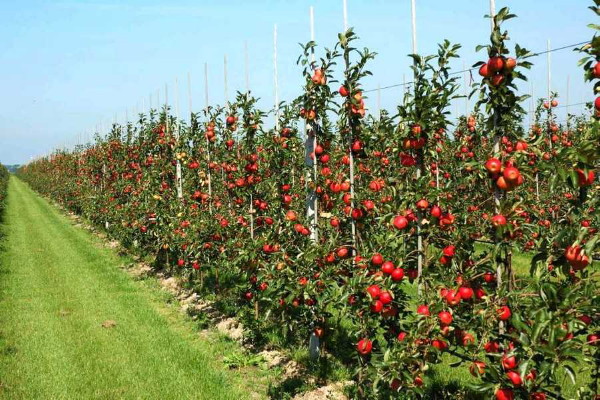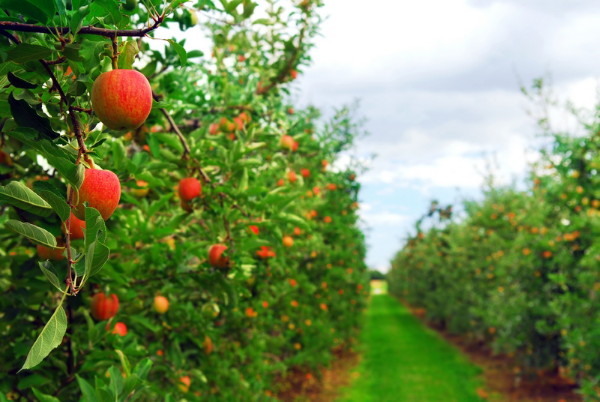Orcharding and fruit farming
Orcharding and fruit farming. A major branch of agriculture, devoted to the cultivation of fruits and berries. As a source of many trace minerals, vitamins, acids, oils (up to 70 percent in nuts), and albumen (up to 22 percent in nuts), fruits and berries play an important nutritional role. Because these foods are relatively costly, their consumption is a good indicator of the economic well-being of a population. In Soviet Ukraine fruit growing was an important source of revenue for collective farms and private plots: in 1983, 48.1 percent of all orchards were on private plots, and 27.9 percent belonged to collective farms. Thanks to a favorable climate, orcharding has been practiced in Ukraine since ancient times, although prior to the 15th century fruit farming was subsidiary to wild fruit and berry gathering. The Greeks cultivated fruits and berries in the ancient states on the northern Black Sea coast, especially in the Crimea. In the Princely era horticulture was concentrated in Kyiv and its outskirts. As early as the 9th century orchards were cultivated, and selection was used to improve varieties. Later, monasteries, such as the Kyivan Cave Monastery, became important centers for the development of horticulture. Apples, pears, cherries, black cherries, plums, and walnuts were the principal crops grown in the medieval period.
In the 18th century orcharding developed rapidly and became widely practiced. Monasteries, the gentry, and the Cossack starshyna kept extensive orchards. New varieties and cultivation methods were introduced by German, Bulgarian, and Czech colonists. For the first time peasants became involved in horticulture, although most of their crops were not sold but consumed at home. Peasant fruit farming for commercial purposes began only in the 19th century.
The first significant contributions to scientific horticulture were made by the Symyrenko family—Platon Symyrenko, Lev Symyrenko, and Volodymyr Symyrenko—and Vasyl Kashchenko. Horticultural schools and research insitutions, such as the Nikita Botanical Garden, arose in the 19th century. In 1887 there were 209,000 ha of orchards in the nine Ukrainian gubernias under Russian rule. By 1913 the figure had increased to 293,000, or 44.5 percent of all of the orchards in the Russian Empire. Ukraine produced 557,000 t of fruit (primarily apples, black cherries, cherries, plums, and pears; apricots and walnuts in the southern regions), and its average productivity was 24.8 centners per ha. About 60 percent of the orchards were owned by peasants: they were small and crudely cultivated, and produced a random assortment of fruits. The largest commercial orchards were in the Podilia-Bessarabia region and the Crimea.
In the early 20th century horticulture went through a cycle of destruction (during the First World War), recovery (by 1927 the prewar level had been reached), and destruction (during collectivization). By 1940, 612,000 ha in Ukraine were devoted to fruit farming, with private plots accounting for 52.3 percent of the total area. That figure represented 2 percent of the republic’s arable land and 34.2 percent of the orchard area in the Union of Soviet Socialist Republics.
In Western Ukraine horticulture was less developed than in Soviet Ukraine. In Transcarpathia, for example, horticulture accounted for less than 1 percent of the arable land in 1935. In the postwar period horticulture reached a peak in 1965, when 1.3 million ha were devoted to fruit farming. Since then the emphasis has been on intensifying rather than expanding horticulture.
In 1983 1.1 million ha were devoted to orchards, or 3.3 percent of the arable land in Ukraine. That area represented 35.1 percent of the orchard area of the former USSR. The main crops were apple (72.2 percent), plum (10.1 percent), pear (7.5 percent), and red and black cherries (5.8 percent). Polisia had 18.8 percent of the orchards, the forest-steppe region 40.1 percent, and the steppe region 41.1 percent. Private plots with a productivity of 47.9 centners per ha accounted for 48.1 percent of the horticultural land, or 524,000 ha; collective farms with a productivity of 23.4 centners per ha represented 27.9 percent, or 304,000 ha; and state farms with a productivity of 63.9 centners per ha represented 24.0 percent, or 231,000 ha. By 1990 the area of arable land taken up by orchards had decreased to 851,000 ha. Their total harvest amounted to 2.9 million t, and their productivity had risen to 42.3 centners per ha.
Because horticulture demands intensive labor and sophisticated techniques, it continues to experience serious difficulties in Ukraine. In 1970, 20 percent of the fruit was left to rot in the fields for lack of transportation. As a result horticultural produce was in short supply, especially outside the growing season. In 1976 the per capita fruit consumption in the USSR was 20 percent of that in the United States. Scientific research in horticulture was conducted at the Ukrainian Scientific Research Institute of Orcharding and its research stations as well as in the departments of horticulture in agricultural institutes. (See also Viticulture.)
BIBLIOGRAPHY
Shcherbyna, M. Sadivnytstvo plodove ta iahidne (Kyiv 1926)
Sadivnytstvo i vynohradarstvo (Kyiv 1959)
Chukhno, D. Ekonomika sadovodstva (Kyiv 1961)
Iurchyshyn, V. Ekonomichna efektyvnist' porid i sortiv plodovykh kul'tur (Kyiv 1968)
Mykhailo Borovsky, Chrystia Freeland
[This article originally appeared in the Encyclopedia of Ukraine, vol. 5 (1993).]

